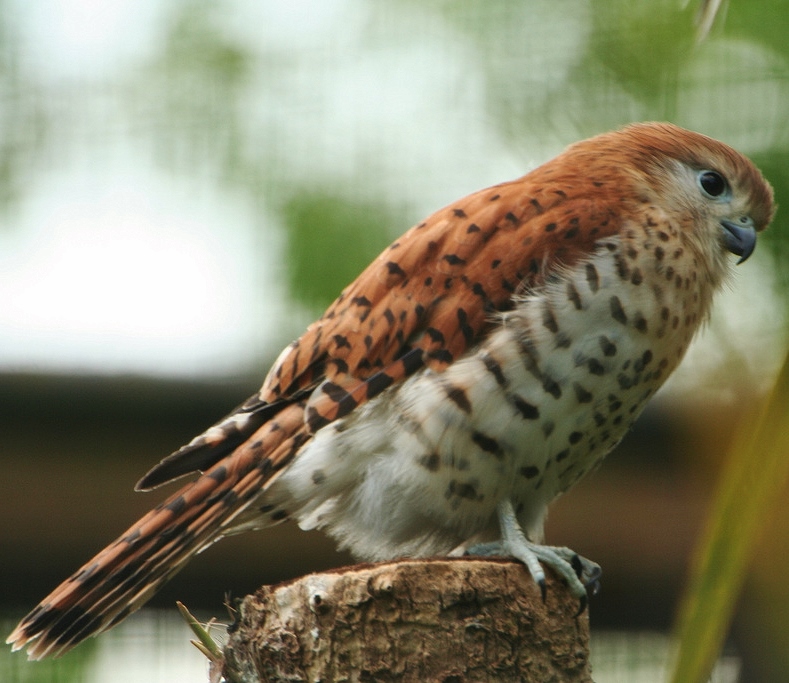 |
| Photo by Andy Jones (Flickr) |
Common name:
Mauritius kestrel (en); peneireiro-das-Maurícias (pt); crécerelle de Maurice (fr); cernícalo de Mauricio (es); Mauritiusfalke (de)
Taxonomy:
Order Falconiformes
Family Falconidae
Range:
This species is endemic to the island of Mauritius, in the Indian Ocean, where it is mainly restricted to the south-western plateau.
Size:
These birds are 20-26 cm long and have a wingspan of around 45 cm. They weigh around 110 g.
Habitat:
The Mauritius kestrel is mainly found in sub-tropical evergreen forests, but an also be seen in degraded and open areas, such as secondary forests and savannas, grasslands and scrublands. They tend to avoid agricultural areas, possibly due to a lack of isolated mature trees to use as vantage points. They are present from sea level up to an altitude of 800 m.
Diet:
They mainly prey on the endemic arboreal Phelsuma geckos, but also take small birds, insects and introduced mice and shrews.
Breeding:
Mauritius kestrels are monogamous and territorial, and breed in November-March. They nest in cavities in trees or rocks, or more recently in nests boxes, where the female lays 4-5 white eggs with brown speckles. The eggs are incubated for 28-39 days and the chicks fledge about 5 weeks after hatching and stay in the natal territory until the next breeding season.
Conservation:
IUCN status – VU (Vulnerable)
This species has a small breeding range and a global population estimated at just 250-300 individuals. The current population trend in uncertain, but it may be declining after an increase detected in the last decade. Since the colonizationof the island, deforestation has reduced the forest area in Mauritius to less than 3% of the original, which as greatly limited habitat availability for this species. More recently, the main threats affecting the Mauritius kestrel are poisoning by organochloride pesticide, nest predation by introduced predators such as black rats Rattus rattus, crab-eating macaques Macaca fascicularis, Indian mongooses Herpestes javanicus and feral cats, and high rates of inbreeding due to the small population size. The introduction of exotic plants may also reduce habitat quality and climate change may affect this species through changes in rain patterns. Conservation actions such as supplementary feeding, captive breeding, construction of nest-boxes and nest protection have had some limited success in halting population declines.







